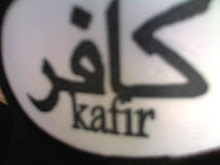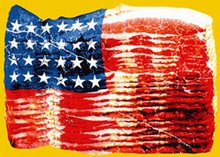Macedonia: You want a church, dhimmis? Then build a mosque too.
No new Church without a mosque. Wahhabi beach parties are okay. And reporters, you come around asking questions we threaten you with a gun. Got that?
Moslems are marking their territory. Or is that "terror' tory?
When government officials in Macedonia recently proposed rebuilding a church that once stood on the city’s central square, they received an abrupt warning: for the Islamic Community (IVZ), the recreation of Sveti Konstanin & Elena, destroyed in the 1963 earthquake, should guarantee them their own right to build a mosque in the prominent downtown area.
This is not the first time that Muslim officials have raised their voices on this issue; it has been a hot topic for several years now. And in interviews and public statements, the ambitions of the Islamic leadership to restore the Ottoman-era landscape have been clearly seen. The A1 article quotes an IVZ official who states that the Islamic Community had put forward the request to rebuild the Burmali Mosque “one year ago.” Communist Yugoslavia did away with other some surviving mosques, converting them into spaces for public use, as had its Royalist predecessor.
The post-Communist denationalization process has seen considerable assets and property returned to their former owners. Nevertheless, in the competition to win back as much largesse as possible from the state, Muslims are particularly resentful.
Later this year, the Macedonian Jewish Community will finish work on a new Holocaust Memorial Center, to be built over the location of Skopje’s former Jewish quarter, which adjoins the city’s main Muslim stronghold and overlooks the northeastern bank of the Vardar. “The government did everything it could for the Jews, and for the Christians,” one high IVZ official complained in early 2006. “But they don’t want to give anything back to the Muslims- they fear our power.”
Forces at work within Macedonia’s Muslim community have therefore sought to take power into their own hands. Unlike the Skopje officials who merely proposed rebuilding the central church, Muslims have simply gone ahead with the philosophy of build first, ask questions later. A Macedonian journalist interested in asking builders about a mosque that was being constructed in a Christian majority neighborhood of Skopje two years ago was threatened at gunpoint. Islamic officials controlling funds from letting properties and for building works have been associated with the radical Wahhabi movement in the past, and tend to be very secretive.
The suspicion that much of the new mosques are being built with Saudi money is evidenced in places such as the village of Saraj, just west of the capital, where one garish mosque adorned with Saudi-style double minarets stands besides the highway; another is currently under construction adjacent to it. When asked about the source of funding for the former mosque, a local imam stated that it had all been accomplished through local donations- the usual, and impossible to verify, response in such cases.
However, a currently serving European intelligence officer surveyed about the newer mosque under construction in Saraj, which will give the village a total of three, suspected a more long-term goal at work: “the location right along the highway, where all the drivers are passing on to go out of the city, is not picked by accident. It makes a statement,” he said. “This is also part of the plan to consolidate Saraj with Kondovo across the highway, eventually.”
Sprawling Kondovo, backed by wooded hills leading north toward the porous Kosovo border, is the site of the country’s main madrassah. The 40km highway from Skopje to Tetovo, flanked by these and several other Albanian Muslim villages, is one of the most heavily trafficked stretches of road in the country and the route that most tourists take when going to the tourist destination of Lake Ohrid. Stocking this span of highway with mosques, as has already partially been accomplished, is a priority for Islamists looking to ‘mark their territory’ in a way that will be visually overpowering. The IVZ’s desire to rebuild the Burmali Mosque in the center of Skopje mirrors, and even exceeds this goal, given that it will be both highly visible, audible and also frequented by observant Muslims, dramatically changing the general experience of the city center for locals and tourists alike.
That Islamic groups are not interested just in reviving Ottoman architecture has been witnessed in numerous ways. A mob of Muslim youth, officially criticized by the IVZ, protested against the Danish cartoons of Mohammed back when that controversy was playing out across Europe in February of 2006. More recently, on 10 January Muslim women petitioned successfully for the right to wear head scarves in official photographs. According to Balkan Insight, an obscure women’s association, ‘Islam and Science’ had filed a complaint in November 2007, claiming that “the ban violated the right to freely express religion.”
Further, as was witnessed in 2006, local sources in Struga, on Lake Ohrid in Macedonia’s southwest, recently stated for Balkanalysis.com that a Wahhabi ‘beach party’ in July, “twice as big as the year before,” brought around 100 bearded men and youth to the beach for a day of football, conversation and casual religion. While undercover police snapped photos, however, the bizarre occurrence was not reported in the media.
Of course not. It is the Religion of Peace after all.





|